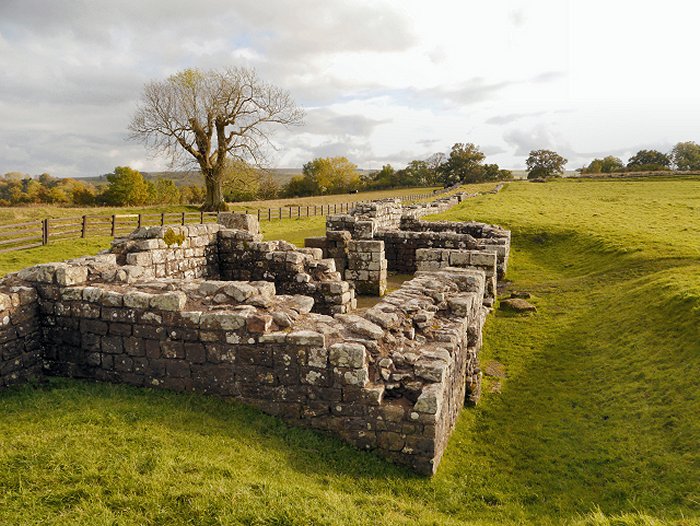Rare Medieval Gold Object Unearthed At Birdoswald Roman Fort In Northumberland

Jan Bartek – AncientPages.om – An archaeology student, who was unable to participate in Newcastle University’s excavations at Birdoswald Roman fort with Historic England last year due to illness, had a fortunate turn of events this year.
Birdoswald Roman Fort, Hadrian’s Wall. Credit: David Dixon – CC BY-SA 2.0
Within the first 90 minutes of fieldwork, Yara Souza made a significant discovery by unearthing a rare early Medieval gold object. Souza was part of a team from Newcastle University, collaborating with fellow students from the Archaeology BA Honours degree course and professional archaeologists from North East Museums to conduct further investigations at the site.
Tiny Gold Object Discovered
“I couldn’t believe I’d found something so quickly into my first ever excavation,” Yara said. “It was actually quite overwhelming. After I’d had to miss Birdoswald last year, it was amazing to discover something that hasn’t been seen for more than a thousand years, I was really geeking out over it!”
The location where the two objects were found is close to the route of Dere Street, a major Roman road which ran between York and Edinburgh, and which continued to be used long after the demise of the Roman empire – eventually becoming part of the modern-day A68.
The most recent find is approximately four centimetres long and has a decorative finial at one end. Gold was high status and only used by the elite, and as Dere Street connected two major religious centres at Jedburgh and Hexham, experts involved in the excavation think the two objects could have had a religious or ceremonial use.
“This is an exciting find of exceptional quality and I’m delighted for Yara that she has made this discovery at the beginning of her career as an archaeologist.
The gold object was discovered in Northumberland. Credit: Newcastle University
We know that Dere Street continued to be a major thoroughfare long after the Romans and it’s clear from this discovery that high status people were using it. It is possible that this pair of objects may have been deliberately buried,” Professor James Gerrard, Professor of Roman Archaeology at Newcastle University and Yara’s tutor said in a press release.
The two objects are scheduled for further analysis, with the intention of eventually displaying them at the Great North Museum: Hancock.
A Brief History Of Birdoswald Roman Fort
Birdoswald’s historical significance dates back to the clearing of a wooded spur for the construction of Hadrian’s Wall in AD 122. Shortly thereafter, a fort was added to the Wall, garrisoned by an infantry cohort of over 800 men, and it remained occupied throughout the Roman period. Notably, its defenses are among the best preserved along Hadrian’s Wall. Initially intended as a turf and timber structure, this phase was not completed; instead, a stone fort was constructed. Although construction paused for several years, it was finished before Hadrian’s reign ended in AD 138, with most internal buildings dating from this period. Spanning 2.14 hectares, it ranked among the larger forts on Hadrian’s Wall.
The fort saw reoccupation during the Middle Ages and faced raids by border reivers in the 16th century. Continuous occupation likely ceased in the early 6th century; however, an Anglo-Saxon artifact from the 8th century suggests some continued presence.
Documentary evidence indicates that between 1194 and 1232 Walter Beivin and his nephew ‘Radulpho de Bordeswald’ were involved in witnessing charters and granting lands around Birdoswald to Lanercost and Wetheral priories. Birdoswald belonged to Triermain manor under Gilsland barony ownership. In 1295 John Gillett held land there.
See also: More Archaeology News
A document from 1425 refers to John de Vaux as being ‘of Burdoswalde,’ with additional references to his family during that century. Archaeological findings reveal that a small tower house was erected next to Birdoswald’s main Roman west gate during this time frame—highlighting its enduring historical importance.
Written by Jan Bartek – AncientPages.com Staff Writer






